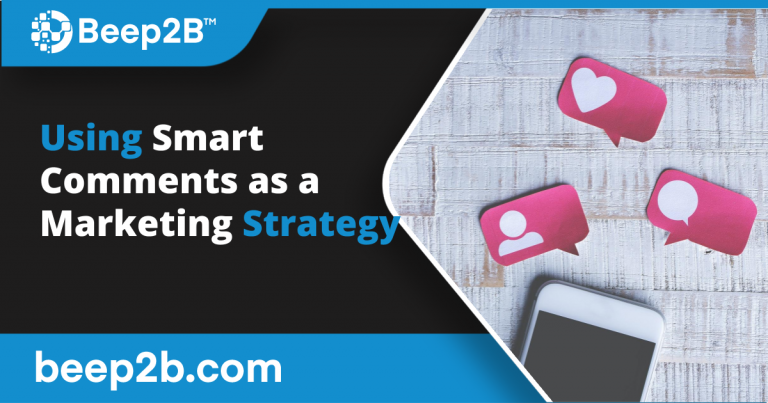With over 800 million members, LinkedIn is an extremely powerful tool for connecting with prospects and growing your business. However, it’s quickly becoming a highly competitive space.
To see results with LinkedIn, you need to leverage an effective marketing strategy.
While posting valuable content on a regular basis is a key part of LinkedIn marketing, so is something even simpler: commenting.
That’s right, simply commenting (in the right way) can help you bring awareness to your personal brand or business on the platform.
When you leave a smart, insightful comment on someone else’s content, you put your name out in front of their audience. It can compel the post author and their audience to learn more about you.
Any old comment won’t do. For this method to work, you need to leave a good comment. If your comments are really good, you’ll stand out and be able to leverage other people’s audiences.
Here’s what you need to know about using smart comments:
Qualities of a Good Comment on LinkedIn
Before you can start leaving good comments, you need to know the qualities of a good comment. Here are the things that an effective comment includes:
It contains the author of the post’s name
Adding the name of the post author in the comment is a very simple way to boost the efficacy of your comment.
Why?
Adding the name makes it more personal. It draws their attention, making the poster feel you are talking directly to them.
Marketers use this same concept in emails as well. In fact, personalized emails provide a transaction rate 6x higher than generic emails.
The same logic applies to your comments. Adding the poster’s name is a way to personalize the comment and connect on a deeper emotional level. The poster will be more likely to notice and respond to the comment, which helps draw attention to it.
It asks a question
Another great strategy for LinkedIn comments is to ask a question. Questions provoke thought, and they elicit a response. They encourage both the poster and the audience to respond with their insight or opinion.
The question should be open-ended (not a yes or no question). It should demonstrate your understanding of the content posted, and show that you paid attention. Be careful not to ask something that was already addressed in the content!
Questions are particularly effective when paired with your own insight or statement first. For example “Great in-depth review, John! I’ve also seen how effective this strategy has been in my industry. Why do you think some of the largest businesses are so slow to adopt this method?”
In general, here are a few outlines for questions to ask:
- How has X affected your business?
- What do you think the solution is?
- What does the future hold for X?
- How has X changed over the course of your career?
It specifically addresses something about that particular piece of content
Good comments also address a specific part of that piece of the content. They are not generic. Instead, they hone in on something mentioned in the content.
Again, this shows your attention to the piece. It demonstrates your knowledge of the space and is more likely to elicit a response.
Instead of “Great piece!” you can focus on a certain section. “I really liked how you described X. It made it very easy to understand the long-term implications of this.”
It provides criticism (even challenges the idea being shared in the post)
Not all good comments are 100% positive or in agreement with the article. A good comment may also provide criticism or the entire premise of the idea being shared. This sparks debates in the comment section. It may also help to attract the right audience to your page.
Respectively disagree when it makes sense. You can even include fair critique in an overall positive comment. Perhaps you wished the person shared a bit more about one aspect, or maybe the post needed a personal example.
Another good way to challenge the idea is with a question.
Be the First to Post
In addition to writing a good comment, you also want to write an early comment. This is especially true for people with large audiences.
If you can be one of the first people to post on a piece of content that will likely get many views and comments, then you have a better chance of earning a “most relevant” comment.
Furthermore, there’s a greater chance that the poster will see and respond to your comment. As more and more people see the article, they will all be seeing the first comments left. This is why it’s so important to post your good comment quickly.
Conclusion
The bottom line is that leaving smart comments is a great way to generate exposure on LinkedIn while also building your brand awareness. Quality comments can help you establish thought leadership in a competitive space.
Use the tips above to craft effective LinkedIn comments. If you’re looking for help generating more qualified leads on LinkedIn, Beep2B is here to help! Learn more about the power of Beep2B marketing today by booking your free strategy session.


